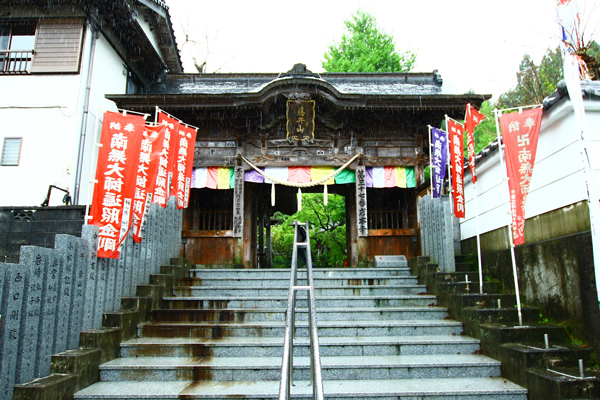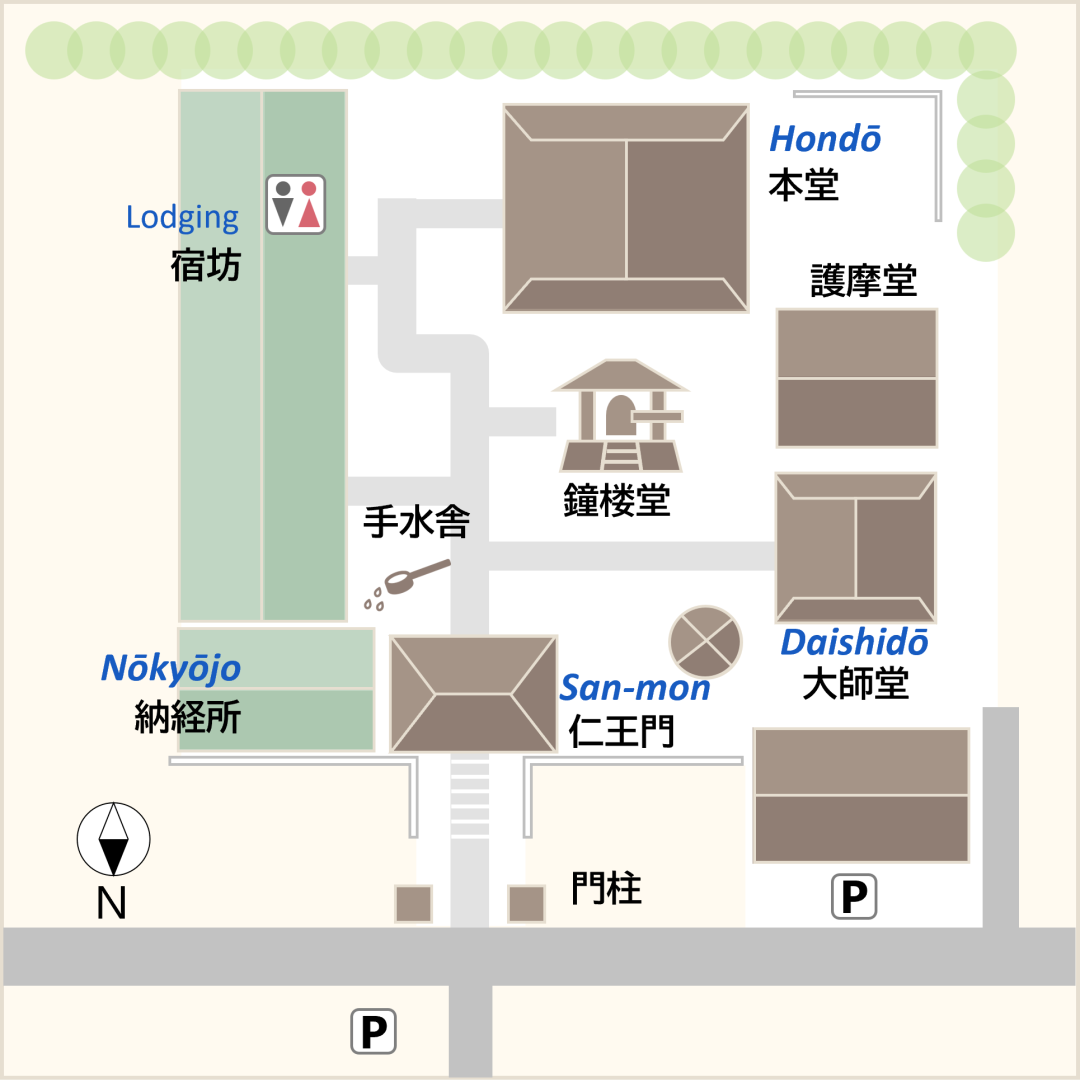The Shikoku Pilgrimage Temple Guide
Temple 37, Iwamotoji

Precinct map

History of the temple
Iwamotoji is located in Shimanto Town, where the Shimanto River flows and the Konan Plateau stretches at an elevation of about 300 meters. The temple dates back to the Tempyo era (729-749). According to a temple legend, the predecessor of the temple was Fukuenmanji. It was built by Gyoki at the order of the Emperor Shomu, to pray for the immediate destruction of the Seven Afflictions and the immediate birth of the Seven Blessings. The temple was located near the Niida Myojin shrine, about three kilometers northwest of the present site. It is said that the temple had seven branch temples. The temple was also called Niida-dera because it managed the Niida Myojin.
Kobo Daishi visited this temple during the Konin era (814-824). He divided Niida Myojin Shrine into five shrines and enshrined the principal images of each shrine: Fudo Myōō (Immovable Wisdom King), Kannon Bosatsu (Bodhisattva Who Hears the Sounds of the World), Amida Nyorai (Buddha of Limitless Light and Life), Yakushi Nyorai (Medicine Buddha), and Jizo Bosatsu (Earth Treasury Bodhisattva). He also built five branch temples. At that time, these five branch temples and the seven branches of Fukuenmanji were together called the Twelve Fortune Temples and the five shrines of Niida Myojin were called the Niida Five Shrines.
During the Tensho era (1573-1592), both the temples and the shrines lost their prosperity temporarily due to fires during war. When the temples were rebuilt, their functions were passed on to Iwamotoji (called Iwamotobo at that time) which had all the shrines in this area under its control. During the Sengoku period (1467-1590) and the Edo period (1603-1868), the temple received land from warlords and feudal lords, and it prospered as a temple of the syncretism of Shintoism and Buddhism. In the Meiji era (1868-1912), the temple was separated from the Niida Five Shrines under the policy of separating Shintoism and Buddhism. The five principal images and the temple roles of shrines were united in Iwamotoji, and most of the temple grounds were taken away due to the governmental policy abolishing Buddhism. Although it was not easy, the temple was gradually restored to make it as it is today.
Highlights
Daishido
This is the oldest building in the temple grounds, built about 200 years ago.
Ceiling paintings in Hondo
When the hall was re-built in 1978, the ceiling was decorated with 575 paintings from all over Japan, featuring kacho fugetsu (the beauties of nature: flowers, birds, winds, and the moon) and the Ningen Mandala (human mandala).

Annual Events
| January 2 | New Year's Special Prayer Ritual |
| February 3 | Setsubun-e (Star Ritual for Warding off Evil) |
| March 20-21 | Kobo Daishi Festival |
| April 8 | Hana Matsuri (Buddha's Birthday) |
| August 13th-16th | Ura Bon |
| December 18 | Shodensai |
| December 31 | New Year's Eve Ceremony |
Details
Names: Fujiisan, Gochiin, Iwamotoji
Denomination: Shingon sect, Chizan school
Principal Images: Fudo Myōō, Kannon Bosatsu, Amida Nyorai, Yakushi Nyorai, Jizo Bosatsu
Founder: Gyoki
Founded: Tempyo era (729-749)
Access
Address: 3-13, Shigekushi-cho, Shimanto-cho, Takaoka District, Kochi 786-0004
Phone: 088-022-0376
Parking: 20 cars, 4 buses
Lodging: Available (reservation required)
Official website: None
